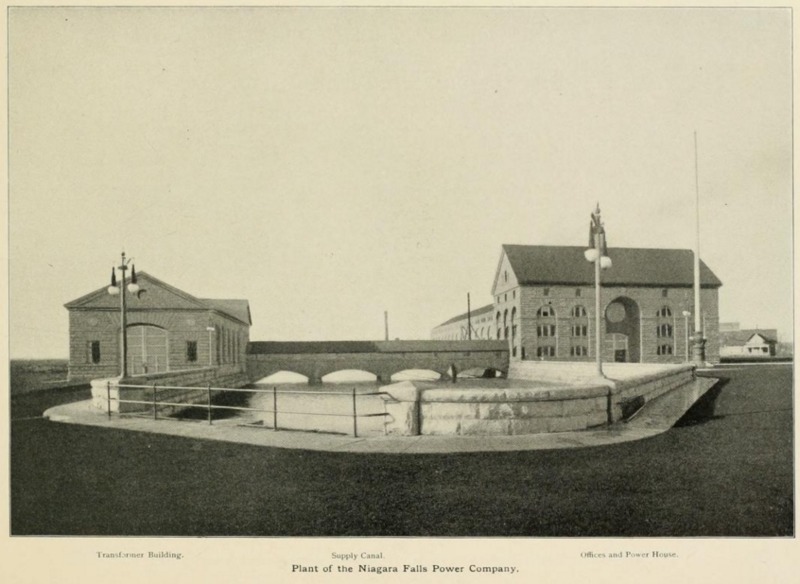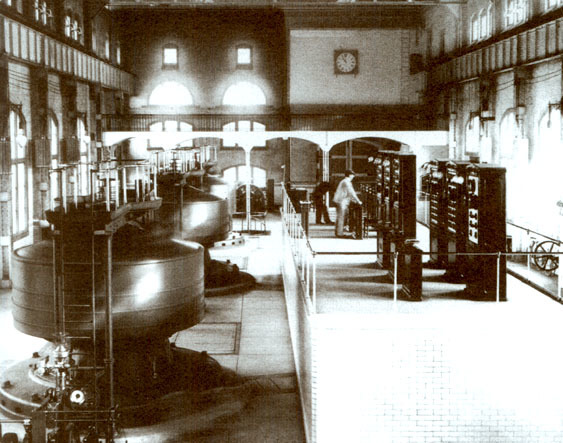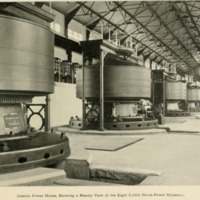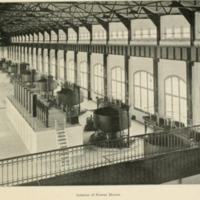Water Power
By the late 1880s, power companies were looking at Niagara Falls as a strong source of waterpower. In order to gain support for waterpower, tourist literature was created that supported the idea of Niagara as a source of power.
The power was drawn from the quickly moving rapids through hydraulics.
The goal was to send the power to nearby cities, like Buffalo; however, in the 1880s, no technology existed yet to move that much power.
In 1895, the Niagara Falls Power Company generated AC power from 35,000 horsepower generators that with the inventions of Edison and Tesla could be sent to Buffalo [15]. With the success of generating and transmitting power, the shoreline was built up with mills and factories.
Visitors would come and marvel at both the falls and the power plants. The appeal of the falls was not to see the water, but to see how humans conquered the rapids and used it to their gain.
Due to the influx of tourists visiting the power plants, Niagara Falls Power Company balanced the technology with making their facilities tourable. The factories were kept clean and well lit. The workers were to show precision, effortlessness, and leisure.
There was a $.25 cent guided public tour of the power plants, which thousands of visitors partook in, and many engineers and politicians also visited [16].
With the success of water power, Niagara became a place to see technology rather than commune with nature.
________________
[15] Jack Foran. “The Day They Turned the Falls On: The Invention of the Universal Electrical Power System”, accessed 9 December 2015, http://library.buffalo.edu/projects/cases/niagara.htm
[16] Irwin, 128.




